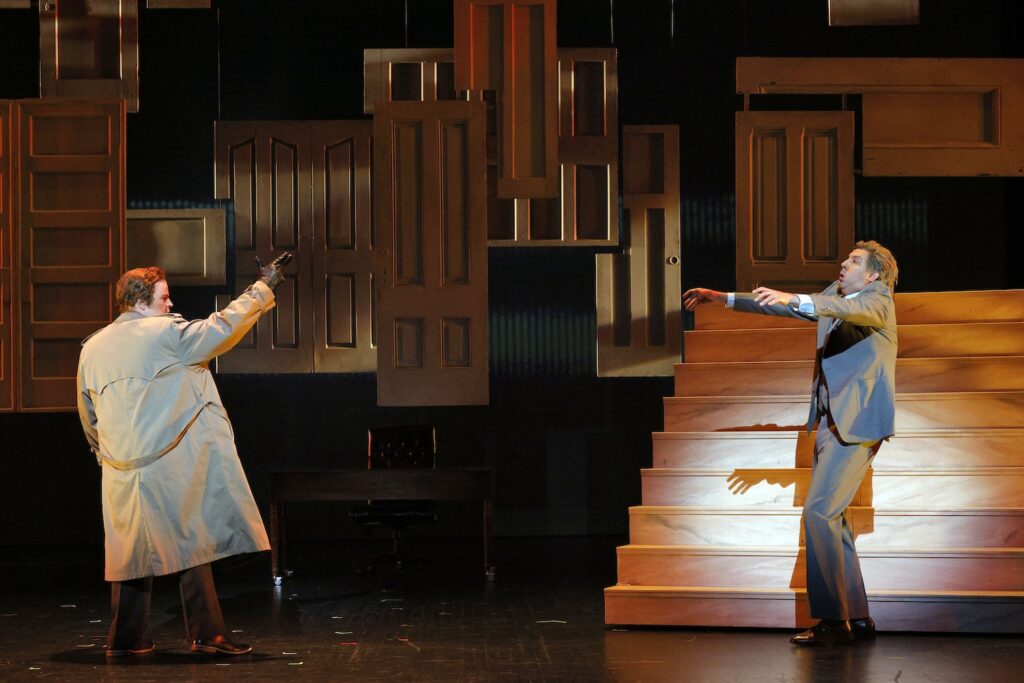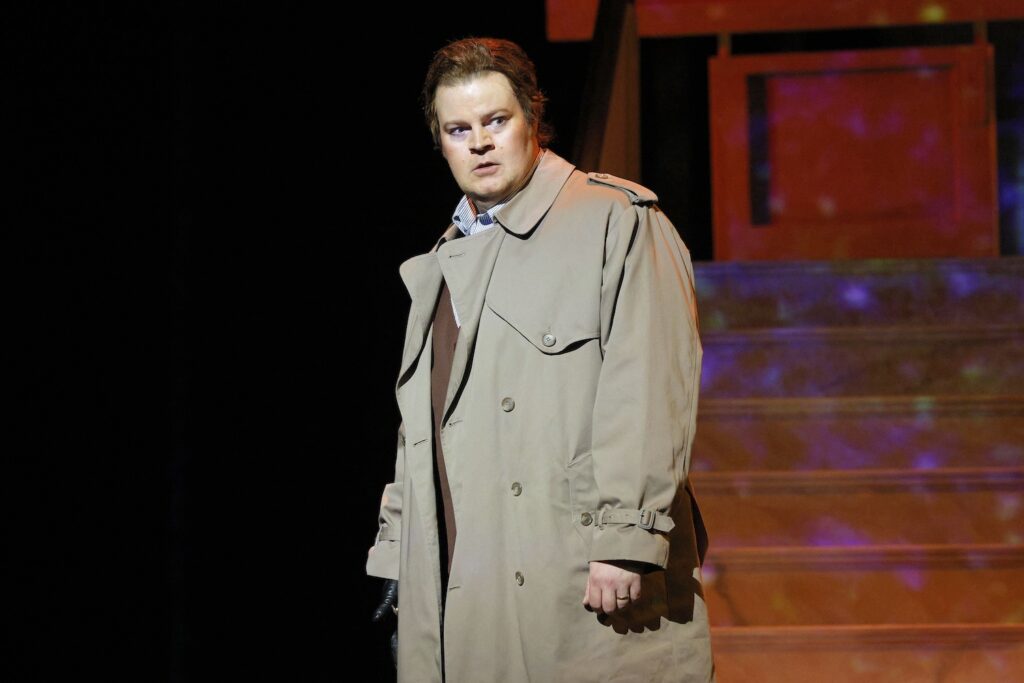Recalling a very dark moment in San Francisco’s history, Michael Korie and Stewart Wallace’s Harvey Milk Reimagined [for small operatic forces], arrived, via St. Louis, finally in San Francisco.
This 1978 massacre remains, still, an open wound in San Francisco, a wound that art cannot heal, a wound exacerbated by the current culture wars, with San Francisco, as usual, the avant-garde.
Back in 1996 when the Christopher Alden Houston production of Harvey Milk arrived at San Francisco Opera it had been trimmed from its original Houston running time of three hours to just two, the same running time of this reimagined version. While the San Francisco Opera production had 53 named roles, the reimagined Opera Parallèle version names but 11 roles, plus four named SF city supervisors. There are 18 additional singers, plus 8 supers, the singers and supers adding the necessary street characters and colors to the narrative. The original, big house orchestra is reimagined, actually refined into 30 players.
Though these smaller operatic resources may be required for Harvey Milk Reimagined it is still a formidable undertaking for any opera company, large or small. Opera Parallèle succeeded handsomely with its own production, staged by Opera Parallèle’s creative director Brian Staufenbiel, the complex score solidly realized by its general/artistic director, conductor Nicole Paiement.
Harvey Milk Reimagined reads as a sort of passion play — a Passion play referring to a formalized theatrical action leading from Christ’s Last Supper to his Crucifixion. In Harvey Milk the passion is an action that begins at a Tosca performance at War Memorial Opera House the night before Harvey Milk is martyred along with San Francisco mayor George Moscone at San Francisco’s City Hall, just across the street (lead photo is of Moscone and Milk posing for a photo as successful politicians). The impassioned musical score has the fervency and urgency that leads, inexorably, to these martyrdoms — executions at close range by repeated pistol shots, the final two into each of the victims’ heads.

The masterful libretto constructed by Michael Korie remarks on Harvey Milk’s love of opera, the affinity of gays for the theatricality of opera, a theatricality that is echoed by the occasional appearance of drag queens in the crowd scenes. The well researched libretto echoes the tenants of the passion play — the New York stock broker Milk finds a second chance in San Francisco, the horrors of the Holocaust are recalled by Milk who was Jewish, and above all the libretto calls for abolishing the taboo imposed on leading an openly gay life. The gay life style was to become a part of the accepted community fabric — as mayor George Moscone had broadened representation of the Black and Asian communities in San Francisco civic government.
The libretto abounds in wit as well. Harvey Milk, parodying the Mozart Don Giovanni libretto, boasts of having slept with 1000 men.
Harvey Milk was originally the idea of British stage director John Dew who was at David Gockley’s Houston Opera in 1986, though he envisioned the story as a musical, complete with drag ballets. Composer Stewart Wallace and librettist Michael Korie were entrusted to develop the idea, and make it an opera. Harvey Milk Reimagined, though, has great resemblance to current musicals in its sleek dramatic unfolding, in the slick, arrogant precision and synthesizer manipulations of its musical score, and above all in the massively amplified sound of the voices and the orchestra.
Were there to be a more operatic, if less ecumenical theater piece about Harvey Milk, it might instead be entitled “Dan White,” the man who murdered Milk and Moscone, or “Wozzeck Reimagined.” Librettist Korie gives Dan White as much sympathy as Alban Berg gave Wozzeck, Korie playing with the chemical addiction of Dan White to packaged sweets, his law enforcement [military] background, his poverty, and his wife and three sons. Harvey Milk the opera does not deal with the Dan White suicide, nor is it implied in the quite lovely Hebrew prayer that closes the opera.

The Opera Parallèle physical production designed by Jacquelyn Scott was comprised of a plethora of hanging doors that flew in and out, implying the closet doors of gays that Harvey Milk had burst open, and four step units that were positioned in various ways to imply locale. Much use was made of projections, designed by David Murakami, both to play quite effectively upon the hanging closet doors, and to provide documentary footage of Milk and other luminaries of his moment at the intermission. Costuming, by Alina Bokovilova, was true to the Milk epoch. Lighting designer Mexly Cousin created suggestive ambience for the remembered, magical and realistic moments of the opera. The massive volume of sound was designed by Ben Krames.
Baritone Michael Kelly well met the histrionic demands of the Harvey Milk role, vocally plausible in the 750 seat Yerba Buena Center for the Arts theater. Tenor Christopher Oglesby played Dan White vocally much as a budding Tristan. Bass Matt Boehler was a sonorous, believable politician as George Moscone. Harvey Milk’s mother was enacted by veteran San Francisco mezzo Catherine Cook, her amplified voice showing the effects of age in glorious tone. Tenor Henry Benson convincingly acted Scott Smith, Milk’s lover, in fine voice. Soprano Marnie Breckenridge was Dianne Feinstein, and Matheus Coura was the now obligatory counter tenor as the Messenger.
Additional named roles were Gabriela Stoloff-Bäez as Anne Kronenberg, Chea King as Henrietta Wong, Bradley Kynard as Jack, and Curtis Resnick as the young Harvey Milk.
Michael Milenski
Blue Shield of California Theater at the Yerba Buena Center for the Arts, San Francisco, California, May 31, 2025
All photos copyright Cory Weaver, courtesy of Opera Parallèle